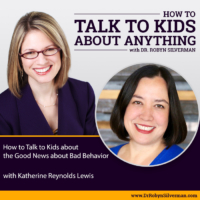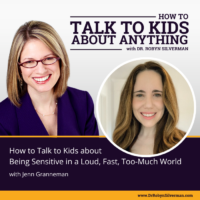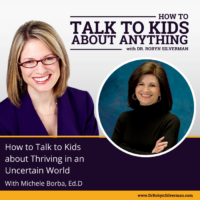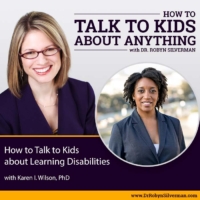Podcast: Play in new window | Download
Subscribe: Apple Podcasts | RSS | More
How to Talk to Kids When Something Bad Happens in the World
This podcast will focus on what to do or say to your child when something bad happens in the world. If your child feels anxious about something scary in the news, there are specific ways to help your child calm the brain down, consider the likelihood of a repeat event or a personalized version of the event and even how they can become the helpers. So what can we do to help kids when something bad happened? Listen in and get the strategies you need to have these rich conversations and easy our children’s anxiety.
Special guest: Dawn Huebner, Ph.D
We all want our children to feel safe, secure and engaged in their lives. But when big, bad things happen in the world- from  mass shootings to natural disasters to other tragedies detailed on the news and filtered through the adults at the restaurant, the neighbors on the street, the kids on the bus and friends at school- the world can feel a little less safe and secure for many of our children. How can we reserve our kids feelings of optimism, safety, security, strength and that inexplicable feeling that comes with a carefree childhood when scary things happen across the world, across the state or across the street? For this important topic, we turn a second time to past podcast guest, Dr. Dawn Huebner who you’ll remember from our discussion about worry and anxiety and how to help our kids when they worry too much—a great and helpful podcast episode that I urge you to listen to after this one.
mass shootings to natural disasters to other tragedies detailed on the news and filtered through the adults at the restaurant, the neighbors on the street, the kids on the bus and friends at school- the world can feel a little less safe and secure for many of our children. How can we reserve our kids feelings of optimism, safety, security, strength and that inexplicable feeling that comes with a carefree childhood when scary things happen across the world, across the state or across the street? For this important topic, we turn a second time to past podcast guest, Dr. Dawn Huebner who you’ll remember from our discussion about worry and anxiety and how to help our kids when they worry too much—a great and helpful podcast episode that I urge you to listen to after this one.
Dr. Dawn Huebner is a Clinical Psychologist and Parent Coach specializing in the treatment of anxiety. She is the author of 9 books for children including the perennial best seller, What to Do When You Worry Too Much, and more recent, Outsmarting Worry. Dr. Huebner’s newest book, coming out THIS WEEK called Something Bad Happened, provides support for children learning about big bad things happening the world. Dr. Huebner has been featured on news and information outlets including the TODAY Show, CNN, Parent’s Magazine and more. She maintains a private practice in Exeter, NH.
The podcast provides:
- Under what circumstances should we share bad news with our children
- Dos and don’ts for delivering bad news to children
- How we can acknowledge that bad things happen in the world while still helping kids to feel safe
- What kinds of talks we can have with children before the bad things actually happen
- Strategies to employ when kids are actively feeling scared about the bad thing that happened
- Signs a child might be struggling with the bad news that s/he heard
- Action kids can take once they hear about “the bad thing” that makes them feel more like a helper
- The best way to help our kids cope with hearing about bad things that happen in our world.
Important Messages:
- Anxiety is debilitating but actually quite treatable if people learn tricks and skills.
- Fear of unrealistic things has moved to many children being nervous about bad things that actually happen in the world.
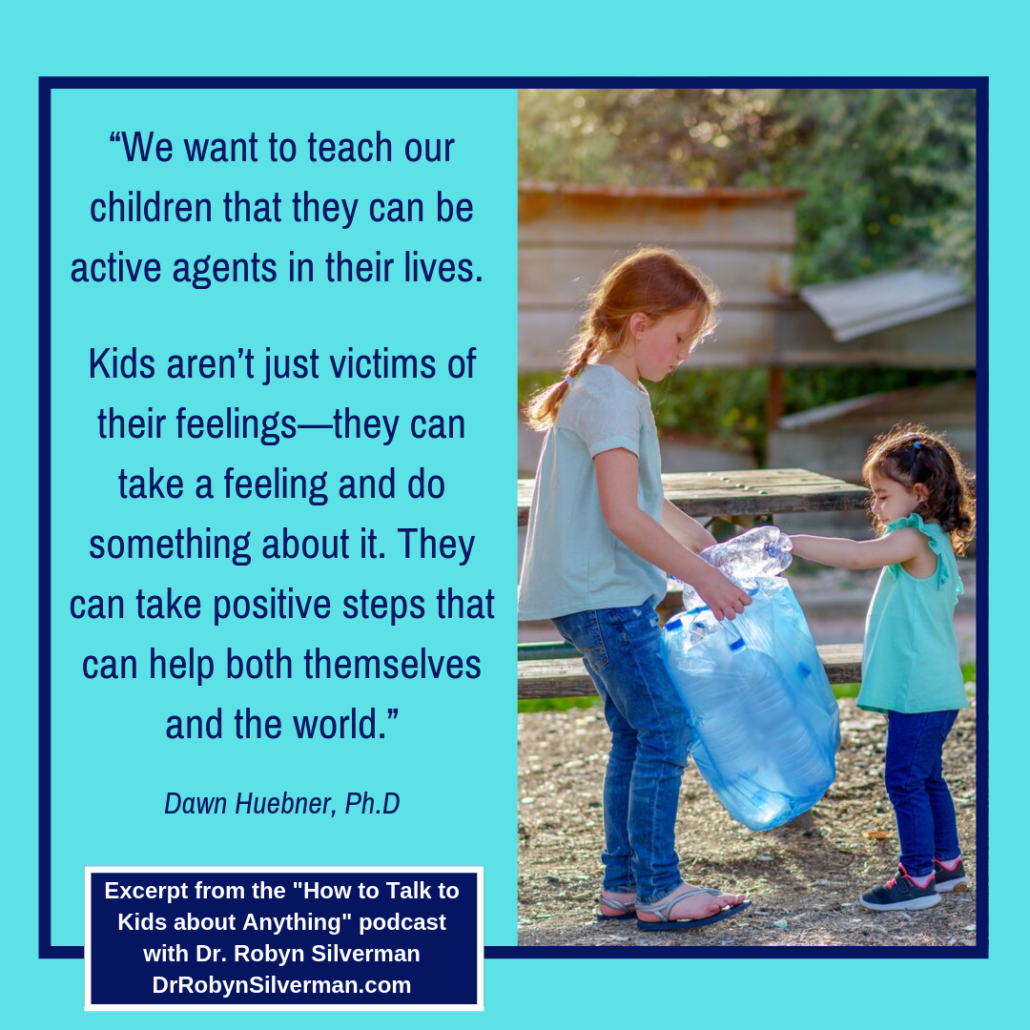
- The impulse to want to protect our children is well-placed. And we do, for the most part, want to keep stories of horrible things that are happening from our children, but there are times when we are not fully in control of that- kids hear about things from friends or overhear parents talking or bits and pieces on the news.
- Tell kids about bad things if we want to make a point about something. Disasters about climate change. Or justice. Immigration crisis. Help a child develop a deeper understanding of something that is going on in the world. Empathy.
- Dos and don’ts: Monitor your own reactions! Process your own feelings so you can remain calm. Children look to adults for cues.
- Don’t talk to kids at bedtime about bad things.
- Start with asking kids about what they don’t know. We make assumptions about what they already know—and think they already know something when they don’t or don’t know anything about a topic when they do.
- Script: “A bad thing happened in the _____________, what have you heard about that?”
- News often sensationalized, dramatic language. We need to speak more simply, more neutral. Sometimes kids don’t need to know the details!
- Why are you having the conversation? Broader issue. Give info so that they don’t hear first from friends.
- When a person is feeling anxious, it becomes hard to tolerate uncertainty.
- Script: “Even though the bad thing happened, it’s so unusual. That’s why everyone is talking about it! Here are the protections that are in place…” Don’t do a guarantee.
- (Pretalk ideas) Gain some distance: Start with things that are happening that are far away or things that happened in the past but not now. Geographic buffer. Develop coping tools, resilience so when they are in a more immediate way, they can cope better. Talk of fear and how we move ourselves through coping.
- Many people personalize- what if that bad thing happens to me? Learn how to recognize- just because you are afraid doesn’t mean you are in danger. Danger alarms- feels like imminent danger. Can go off even if we are just afraid. We must help to ground them in the here and now so that they can see and feel that they are, in fact, safe.
- Marble exercise: Make things concrete. Likelihood- plain marbles and swirly marbles. How likely is it to pick you the one swirly marble in a huge jar of plain marbles?
- Teach children how their brains work. Part of your brain pays attention to what might be dangerous. How do you assess if
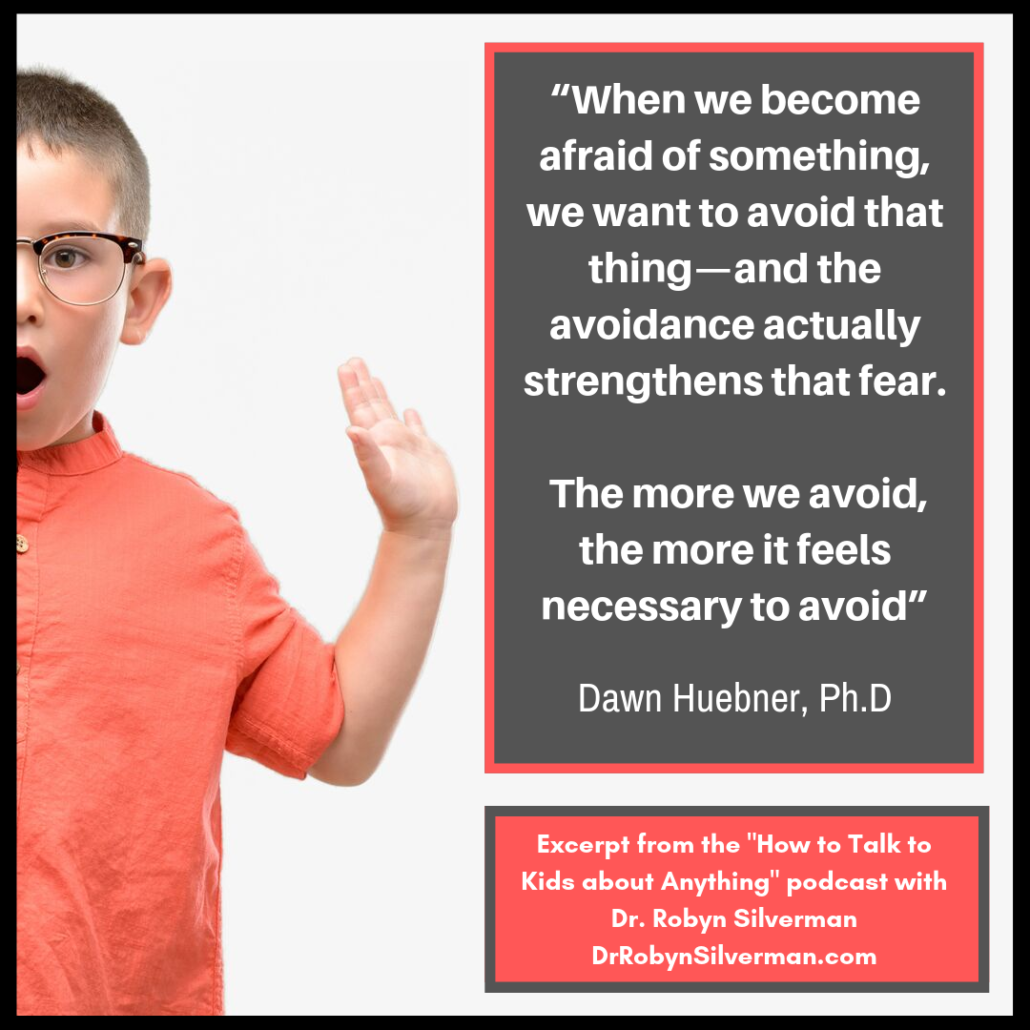 you are actually in danger or not actually in danger. Calm your brain so you can think logically then move to strategies to assess likelihood.
you are actually in danger or not actually in danger. Calm your brain so you can think logically then move to strategies to assess likelihood. - Child is scared: (1) Start with empathy. Acknowledge that the danger alarm that went off. Don’t be dismissive. (2) Make assessments using logic. (3) Give information about safeguards in place so that they know it’s unlikely for something bad to happen. (i.e. training of pilots, number of flights that nothing bad happens, etc)
- Don’t avoid the thing- the more that we avoid, the more it feels necessary to avoid. Pattern- that as soon as we feel nervous, we back away from the thing that’s making us feel nervous. Don’t foster that avoidance. Help children move into situations that are safe that make them feel nervous.
- Children having a rough time: Normal to have a reaction to hear bad news. Give time. But those who are continuing to struggle (signs: changes in appetite, mood, sleep, constant reassurance), seek professional guidance. More typically- shaken, normalize. Point out helpers.
- Tip: What can the child do to help? Take action. Be on the side of the helpers. Participate in a march, collect, write a letter.
- Bystander: witnesses or hears about something bad that has happened. Are you contributing? A bystander can do nothing or a bystander can take positive action. Feeling of empowerment- can still make a difference. Move out of helplessness and fear to strength.
- We want to teach our children that they can be active agents in their own lives. Kids can be active agents- they can take a feeling and do something about it. When sad or scared, they can take positive steps that help themselves and help the world.
- Strategy: Teach kids to talk to themselves and say “I am safe.” Older children can remind self- just because they are scared doesn’t mean they are in danger.
- Complete this sentence- “When something bad happens in the world, the best way to help our kids is: “to talk about it.”
- We want our children to be resilient- that they can face and cope with adversity. When they have these conversations, they start to gain resilience. It’s possible to have these conversations- children want to have these conversations and understand the world around them.
Notable Quotables:
- “It’s important for parents to talk to kids about bad things that kids are likely to hear about from friends, overhear bits and pieces of from parents or pick up on from the news. We also want to tell our children about examples of bad things that are happening that are illustrative of a point that we want to make—climate change, immigration crisis- as a way to talk about a particular issue and help a child develop a deeper understanding of the world that we live in and develop empathy.”
- “Children look to adults for cues about how to feel about things, how dangerous a situation is, so the more a parent can be on top of their own emotion reaction things, when possible, the better.”
- “When a person is feeling anxious about something, it becomes really difficult for them to tolerate uncertainty. Anxious children who hear about bad things happening, often want to know for sure, that the bad thing is not going to happen to them. As tempting as it is to give blanket reassurance, it’s not the most useful thing to do because kids know that their parents can’t be making a guarantee. What parents can and should do is talk about how very rare these catastrophes are instead.”
- “One skill that children can be taught is to learn how to recognize that just because they are afraid doesn’t mean that
 they are actually in danger.”
they are actually in danger.” - “When we become afraid of something, we want to avoid that thing—and the avoidance actually strengthens that fear because the more we avoid, the more it feels necessary to avoid”
- “It’s incredibly helpful to talk to a child about what they can be doing in a positive kind of way–what a child and family might do to be on the side of the helpers in the world. Taking some kind of positive action can be a very empowering thing and it shifts the focus away from the helplessness we feel when we hear about catastrophes to instead, the ways that we can contribute and help.”
- “We want to teach our children that they can be active agents in their own lives. Kids aren’t just victims of their feelings—they can take a feeling that they are feeling and do something about it. It’s another way to show kids that when they’re sad or when they’re scared, they can take positive steps that can both help themselves and help the world.”
- “Children are really hungry to understand what it is that is happening in the world around them—and are made more anxious by secrets that are kept. The more parents have these conversations with their children about things that might feel difficult for them to talk about the more they’re learning how to do that, the more comfortable they’ll feel with that and the better it is for kids.”



